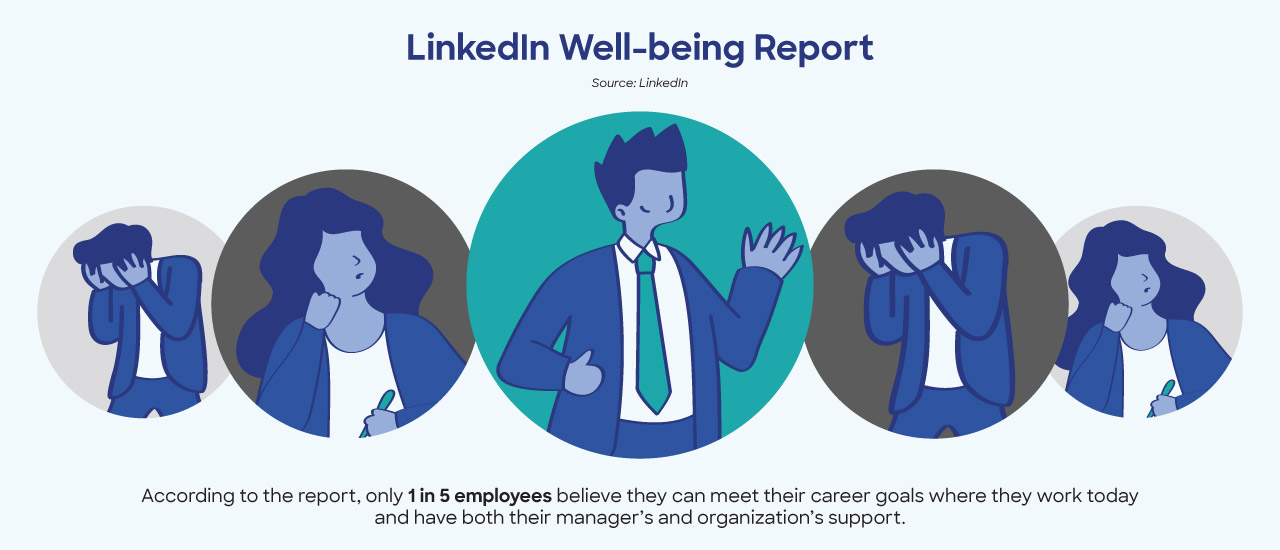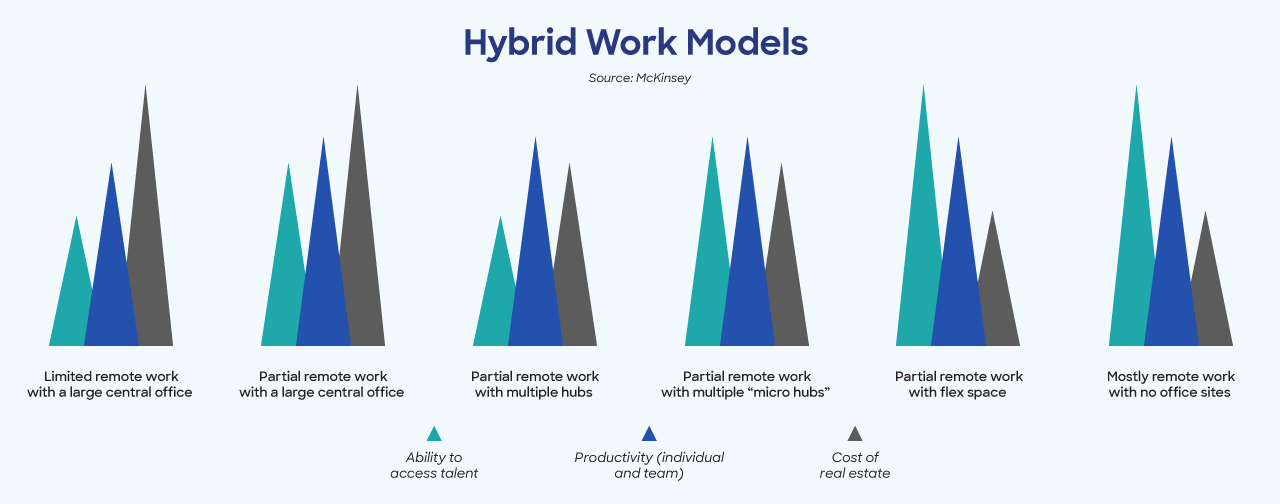‘Great Reshuffle’ Paves Way for the Reinvention of Work
As the world of business slowly shifts to a post-pandemic mode, a lot of people, both employees and employers, are finding themselves coming back to a clean slate, a state of reset if you will, where they are once again free to reconfigure the way they live – a time for the “Great Reshuffle.”
The Great Reshuffle is the result of workers, managers, and executives having separate reassessment of their needs, values, and priorities in the wake of last year’s “Great Resignation” phenomenon and finally coming to meet on a middle ground, according to LinkedIn CEO Ryan Roslansky.
The “Great Reshuffle” may not come easy, LinkedIn’s top honcho admitted, but it could be a big opportunity to rewrite existing business playbooks and create a more efficient and fulfilling work environment for both organisations and individuals.
“It will allow people to gravitate towards jobs more suited to their skills, interests, and personal lives. It could change the fundamentals of not just how we work, but why we work,” Ryan said in a personal video post on the professional social network.
In a report published by LinkedIn, researchers found out that over the last few years, there has been a big mismatch between what the employees believe is important and what organisations are delivering, which primarily caused the mass resignation phenomenon last year.
Work-life balance, fair compensation, and solid company culture ranked highest amongst the things that employees value when they join an organisation. The same study, however, shows that companies are not delivering in these areas too well.
What the study shows clearly is the fact that people are not just looking for money, they want to be part of an organisation with a culture that empowers them to pursue both career and personal growth. People want to work, but they also want to have a fulfilling life while being successful in their careers.
READ MORE: A Multibillion-Dollar Problem That Outsourcing Solves: Workplace Well-Being
A spectrum of hybrid work models
Many organisations have established their own hybrid work setups where the employees have more flexibility in choosing whether to work at the office or at home on certain days of the workweek. Many companies are also implementing flexible hours for roles that do not require many hours at the office.
But hybrid work is not a one-size-fits-all solution since many roles do require going to the office most of the days and some roles can work just as well in a home or remote office setup. It all depends on your needs.
A recent study published by McKinsey laid out a spectrum of hybrid models that organisations can adopt, depending on their need, such as manpower, overall work productivity, and even office maintenance costs.
Limited remote work with a large central office
Under this model, majority of the staff and the company’s leaders are working on one or two big headquarters. Only employees with life or health constraints are allowed to work remotely.
Out of all the models, this one has the highest amount of productivity, but it might be difficult to get quality talent because people are looking for a more flexible work setup.
Moreover, the cost of maintaining a physical office is the highest under this model because most people are using the facilities every day.
Partial remote work with a large central office
Under this model, both employees and executives still spend a majority of the time in the office, but more people, depending on their roles, are allowed to work remotely.
This model is likely to attract more talent because of the flexibility it offers, which also boosts individual and team productivity.
However, because it still maintains a large central office with high foot traffic, the cost for real estate remains high, similar to the first model.
Partial remote work with multiple hubs
This model keeps most of the leadership and staff in the office, except for a good number of employees who are allowed to work remotely because of the nature of their roles.
The only difference is that the organization has multiple small offices or “work hubs” in different regions, making it more accessible to people from different places.
This does not only increase access to talent but also reduces real estate costs, as maintaining smaller work hubs instead of large ones is less expensive.
Partial remote work with multiple “micro hubs”
This model utilizes “micro hubs” or small footprint offices across different regions as their workspaces, with a mindset that more of their staff will be working remotely on most days.
People are keen to join organizations with this model because of the flexible terms, which is also seen to result in high productivity levels.
The real big advantage in this model comes with operating “micro hubs” which is far less expensive than maintaining full-scale offices.
Partial remote work with flex space
Under this model, an organization utilizes temporary or rented space in select cities as collaborative workspaces.
This is ideal for organizations whose staff have roles that can be done remotely as offices become coworking spaces used only for meetings, business gatherings, and collaborative work.
Of all the models listed, this one has the best balance between access to talent, overall productivity, and real estate cost.
Mostly remote work with no office sites
At the extreme end of the hybrid work spectrum, this model is for organizations that have majority of employees with roles that can function in a virtual setup.
This model is very attractive to talent, but not all roles in a business can really function efficiently in a mostly remote setup.
Most of the employees that work in this model do freelance work. They are mostly located in separate cities, and they only meet with their superiors and colleagues via online platforms.
The best practice when it comes to “partial remote work” is to assign days for remote work and days for onsite work. Organizations, however, should understand that the perfect hybrid model will always depend on their size, goals, and nature of business.
Great ‘Reshuffling’ to a more collaborative workspace
With hybrid work being the way forward, organisations must reinvent the way offices are built and used, said Inge Zwick, Executive Director of Philippine-based offshore outsourcing firm Emapta, adding that workplaces in the new normal will look more like collaborative spaces.
“The office will be more of a social and collaborative space. If you are scheduled to be at the office twice a week, then it would be the days when you need to interact or work closely with your colleagues, which is something you can’t really do remotely,” Inge explained, adding that offices and work hubs will be crucial in sustaining social cohesion and eventually shaping company culture in a hybrid setup.
The new normal of the workplace must also be powered by digital tools and office solutions, such as cloud technology and systems, to let the onsite team connect and collaborate seamlessly with those who are working remotely.
And because work-life balance is a top priority, the hybrid workplace must also house recreational spaces for people to mingle, relax, share interests, play or even do some meditations or physical workouts.
Imagine offices with bigger board rooms with a faster connection, bigger desks for bigger teams, and game rooms, gyms, and open space pantries, as opposed to the traditional workplace setup where board rooms are small and most of the employees are isolated in their own cubicles.
People in a “reshuffled” workplace would be more empowered to express and communicate their thoughts with their teammates and managers, with little room for isolation, which is always a good first step in establishing a solid company culture.
Challenges in a hybrid future
Turning a traditional office into a hybrid workspace needs secure technology, which can be a bit intimidating at first since it requires investing time and resources, and more importantly experts in the field of IT and cloud technologies.
Even hardware and software must be upgraded to suit the hybrid work setup. For example, instead of traditional PCs, hybrid work favours the more mobile laptop, perhaps complemented by smartphones and tablets for some specific roles.
Organisations must also look for the most secure IT and security solutions to enable them to share information freely from the main headquarters to their remote teams without compromising sensitive data, a task that needs experts in cyber resiliency.
Besides technology, the other big challenge companies are facing in building a hybrid workforce is finding people, especially in the wake of the “Great Resignation” phenomenon and in the middle of a global talent shortage.
Finding specialists and experts are most difficult for organisations in industries with specialised needs, such as finance and information technology. Many organisations resorted to “skill-building,” where existing employees are taught new skills so they can assume or transition to another role.
Reskilling works, but most of the time it only works effectively with fast learners or people who are open to learning new and sometimes unrelated skill sets. Some people are already good with their current roles and are not that open to a slight change in work.
Innovating with outsourcing solutions
What some organisations overlook is a solution that a lot of companies have already adopted and can help in both the talent and technological challenges of creating the best hybrid work setup possible — offshore outsourcing.
Offshore outsourcing providers can give companies access to the talent pools of places with lower labour costs. The Philippines, for example, as one of the top outsourcing destinations, offers people with specific skills and specialisations that may not be available in the other regions.
And because the Philippines has lower costs of living, talent comes at a lower charge, allowing even small and medium-sized companies to save more resources and go toe to toe with the best in their industry.
READ MORE: A Complete Guide to Outsourcing in the Philippines
Aside from talent, experienced outsourcing providers also provide workspaces that will fit the specific hybrid model an organisation wants to adopt, which comes with all the support needed, including admin, HR, and IT support.
Emapta, for example, offers its clients an option whether to have their staff fully work in one of their 14 offices in major cities across the country or adopt a partial remote work setup with complete technological and IT security solutions.
The “Great Reshuffle” is an opportunity for everyone to build better work environments, not just for better business results, but also for a more harmonious relationship with the employees, and ultimately a better world.














